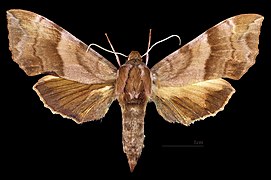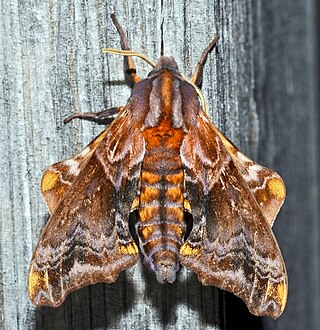
Paonias myops, the small-eyed sphinx, is a moth of the family Sphingidae. The species was first described by James Edward Smith in 1797.
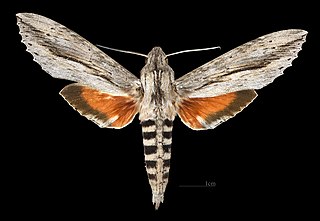
Erinnyis ello, the ello sphinx, is a moth of the family Sphingidae. The species was first described by Carl Linnaeus in his 1758 10th edition of Systema Naturae. It is distributed from Argentina through Central America to the United States as far north as Nevada.
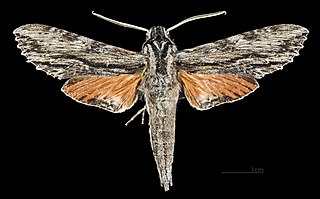
Erinnyis obscura, the obscure sphinx, is a moth of the family Sphingidae. The species was first described by Johann Christian Fabricius in 1775.

Hemaris tityus, the narrow-bordered bee hawk-moth, is a moth of the family Sphingidae which is native to the Palearctic.

Hyles hippophaes, the seathorn hawk-moth, is a species of moth in the family Sphingidae. The species was first described by Eugenius Johann Christoph Esper in 1789.

The willowherb hawkmoth is a moth in the family Sphingidae. The species was first described by Peter Simon Pallas in 1772.
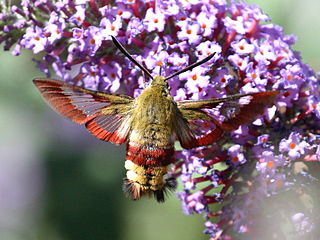
Hemaris fuciformis, known as the broad-bordered bee hawk-moth, is a moth of the family Sphingidae.

Deilephila askoldensis is a moth of the family Sphingidae.

Phryxus is a monotypic moth genus in the family Sphingidae first described by Jacob Hübner in 1819. Its only species, Phryxus caicus, was described by Pieter Cramer in 1777.
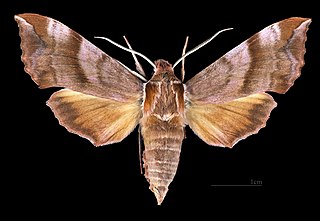
Clarina is a genus of moths in the family Sphingidae first described by J. W. Tutt in 1903.

Acosmeryx sericeus is a moth of the family Sphingidae. It was described by Francis Walker in 1856.
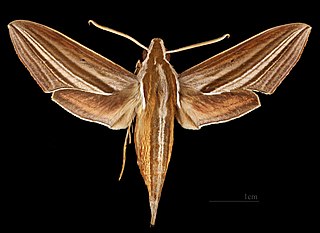
Theretra lycetus, the white-edged hunter hawkmoth, is a moth of the family Sphingidae. It was described by Pieter Cramer in 1775.
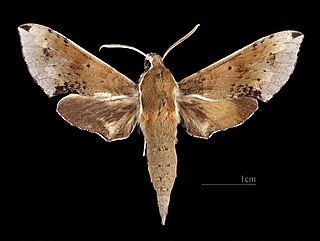
Rhagastis mongoliana is a moth of the family Sphingidae.

Clarina kotschyi, the grapevine hawkmoth, is a moth of the family Sphingidae. The species was first described by Vincenz Kollar in 1849. It is found from the Iranian plateau and Mesopotamia to eastern and central Turkey.

Cechetra minor, the lesser green hawkmoth, is a moth of the family Sphingidae.

Erinnyis oenotrus, the Oenotrus sphinx, is a moth of the family Sphingidae.

Oryba achemenides is a moth of the family Sphingidae.

Oryba kadeni is a moth of the family Sphingidae first described by Schaufuss in 1870.

Meganoton rubescens, the rosy double-bristled hawkmoth, is a moth of the family Sphingidae. It is known from north-eastern India, central and northern Thailand, southern China, northern Vietnam, Malaysia, Indonesia, the Philippines, Papua New Guinea, northern Australia and the Solomon Islands.
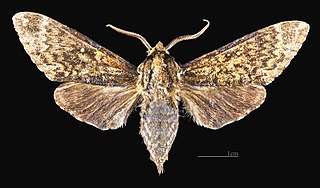
Dolbina exacta, the exact grizzled hawkmoth, is a species of moth of the family Sphingidae.


